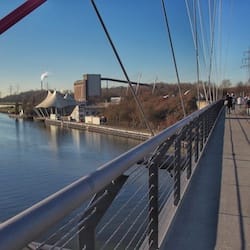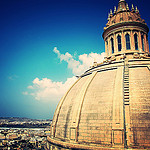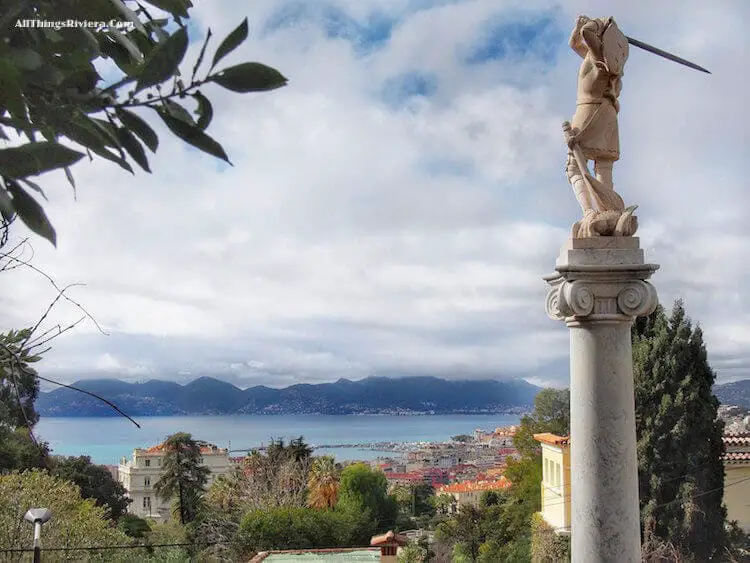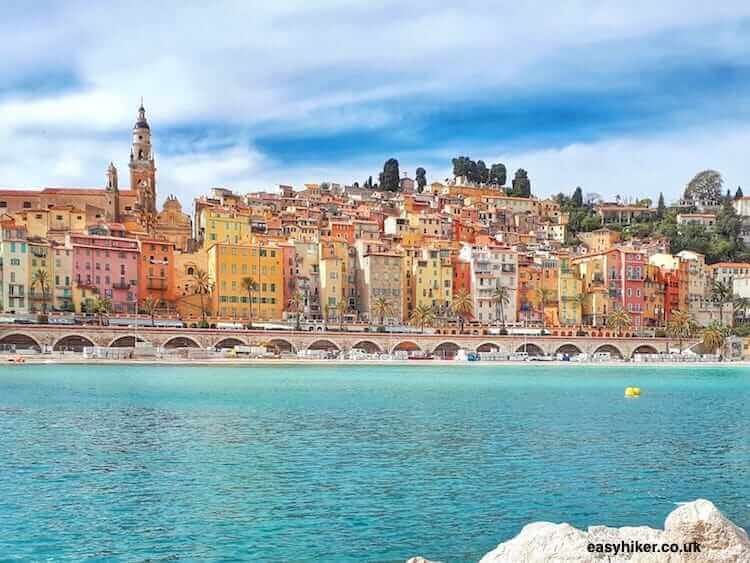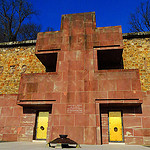The Italian South is not all of one piece, contrary to what visitors from the North (folks like us) may assume. Rather than having been cut from the same cloth, it is a coat of many colours.
Think of the American South, if you will: Tennessee is not like Louisiana, and Texas is another story altogether.
In the Italian South, this “another story altogether” is Sicily.
First of all, there is the general feel of the landscape. If you have visited the southern wastelands of Basilicata recently enough to remember the bleached colours of their palette, the lushness of Sicily will amaze you.
Even a large city such as Palermo is luxuriant and green in many places, …

… constantly reminding you that you are closer to subtropical North Africa than to Naples, never mind to Rome or to the cities of Northern Italy.

Then there are the omnipresent reminders of the extensive damage caused by WWII. When the allied forces landed in July 1943, the German army retreated from one heavily fortified position to the next.
In response, the allied forces adapted a twofold strategy: they relied heavily on their long-range artillery and air bombardments, and they concentrated their attacks on the enemy’s supply lines (places of communication and transshipment) rather than engaging the German army in hand-to-hand battles.
This allowed them to keep their losses low, at the price of significant amounts of collateral damage. As a result, many rural areas remained virtually unaffected, while large port cities in particular were badly hit.
In Palermo, 40 % of the pre-war housing stock was destroyed, and 60,000 people were made homeless in the city centre alone. Some of this war damage is still visible today.

And finally, there is the fact that Sicily – famous throughout antiquity for its fertile lands and the excellence of its agricultural products – was, until fairly recently, one of the Mediterranean’s most prized and coveted assets.
Most great powers have ruled the island for a century or two, turning Sicily over time into a meeting place of many cultures. There are still a few buildings in Palermo that have been around for long enough to reflect this long history of – often conflicting – architectural ideas, above all the Norman Palace …

… and the Cathedral …

… while the rest of the city’s building fabric largely represents one of two architectural styles, the high baroque and the Mediterranean vernacular of the 20th century.
The city’s charm, meanwhile, lies not in its prestige architecture from different periods but in the maze of narrow side streets that constitute most of Old Palermo.
Two recently pedestrianized straight-as-a-die “highways” (Via Maqueda and Via Vittorio Emanuele) dissect this Old Town, cutting it up neatly into four quarters of nearly identical size.
The place where these two streets (and therefore the four quarters) meet is called the quattro canti, the four corners, and serves as the centre of the Old Town and as a meeting place for its citizens.
There is always something going on here, and more often than not, you will find bands playing live music from the afternoon until long after dark.

Use the spines of the main streets’ grid-like structure for easier orientation and as time-saving highways for those moments when you are in hurry.
Otherwise, you should keep to the side streets – for the most scenic views …

… for moments of calmness in the middle of the city’s hurly-burly …

… as well as for the occasional glimpse into people’s backyards.

And always keep an eye open for the telling detail, when mundane modernity is rubbing shoulders with the grandly historical.

Above all, however, keep an eye open for the colourful street markets, because these are the real centres of Palermo’s pulsating life.

These markets are not corralled into confined enclosures in front of a church or a town hall. Traders erect their stalls on the sidewalks or in the streets themselves (every day, all day, except Sundays and Wednesday afternoons), and the larger markets can easily spread over several blocks.
Each of the city’s four quarters has its own market, but the best and most lively ones can be found in Vucciria near the harbour (alongside Via dei Friangiai and Via Argenteria) and Bollarò (around the street of the same name).
Prices can be incredibly low …

… and that may not be the only surprise waiting for you.

These markets are also a great place to eat. Stalls sell deep-fried artichokes or sandwiches with exotic toppings (pork tripe is a local favourite), while the streetside eateries mainly serve seafood.
Just join the queue to point at what looks most appetizing to you. Someone will then prepare (i.e. fry) your food and bring it to your table.
There are far fancier restaurants downtown, but the market eateries match them for quality and provide a much more interesting experience. Don’t miss this!

We had also planned one out-of-town walk, but this part of our trip fell victim to the atrocious weather conditions. Low-hanging clouds and the occasional drizzle had already provided a fairly gloomy background to the first few days of our stay (no complaints: those are the risks of travelling in January).
But then things took a turn for the seriously awful (thunder, lightning and a continuous downpour) on the day when we had planned to visit Monte Pellegrino. (At least we know now why Palermo is so lush and green.)
But since we had done our homework and researched the best route for an easy hike, we might as well tell you all about it so you have an option for your own stay in Palermo – in the highly likely event that you will have better weather than we (it could hardly be worse).
So here is what you can do. Start by taking bus no. 812 from Piazza Sfurzo to the Santuario Santa Rosalia on Monte Pellegerino. Buses leave every 90 minutes on weekdays and hourly on Sundays.
Leave the bus at the final stop, explore the area around the Santuario a little and then look for the Sentiero Medievale, a 4 km long scenic footpath that will take you back to the edges of the town centre near Porta Felice.
If you still have time and energy after this, you can enjoy scenic seaside views from the near-by Foro Italico, the city’s oldest and largest park. You can also explore the equally near-by Via Libertà quarter near the Giardino Inglese, once a very genteel neighbourhood that eventually became the main victim of the “Sack of Palermo”.
This is the term that the citizens of Palermo commonly use to summarize the events in the early 1960s when a corrupt municipal administration – often run by people with close connections to organized crime – razed down dozens of beautiful 19th century villas to create space for cookie-cutter commercial properties and residential buildings, which were then constructed by companies under the control of the Mafia.
Some people became very rich during this period, while the city lost some of its most valuable architectural heritage.
Considering the way things were in Palermo at the time (they appear to have become a good deal better since then), we should be grateful and happy that there is so much of it left to enjoy.


